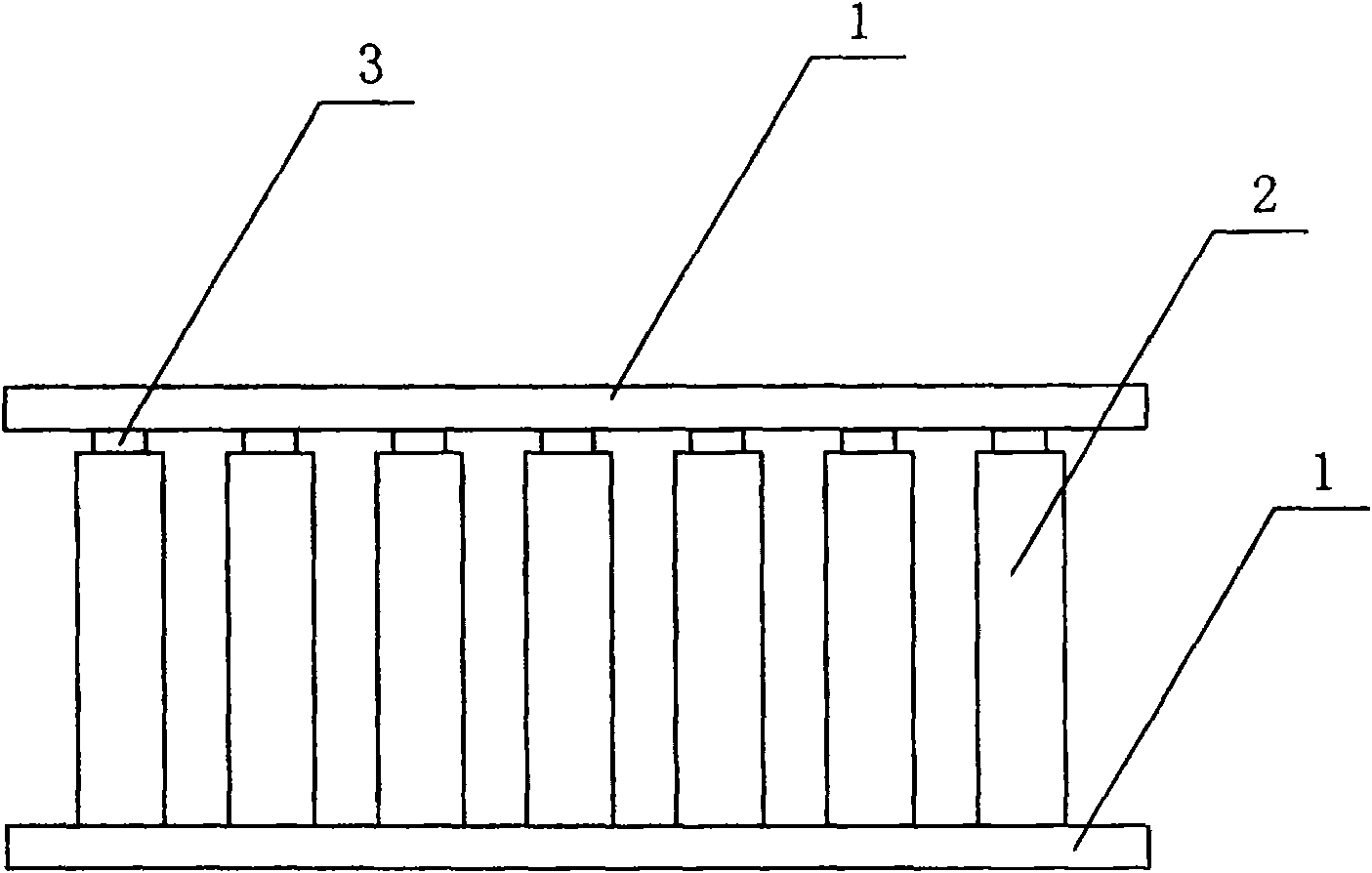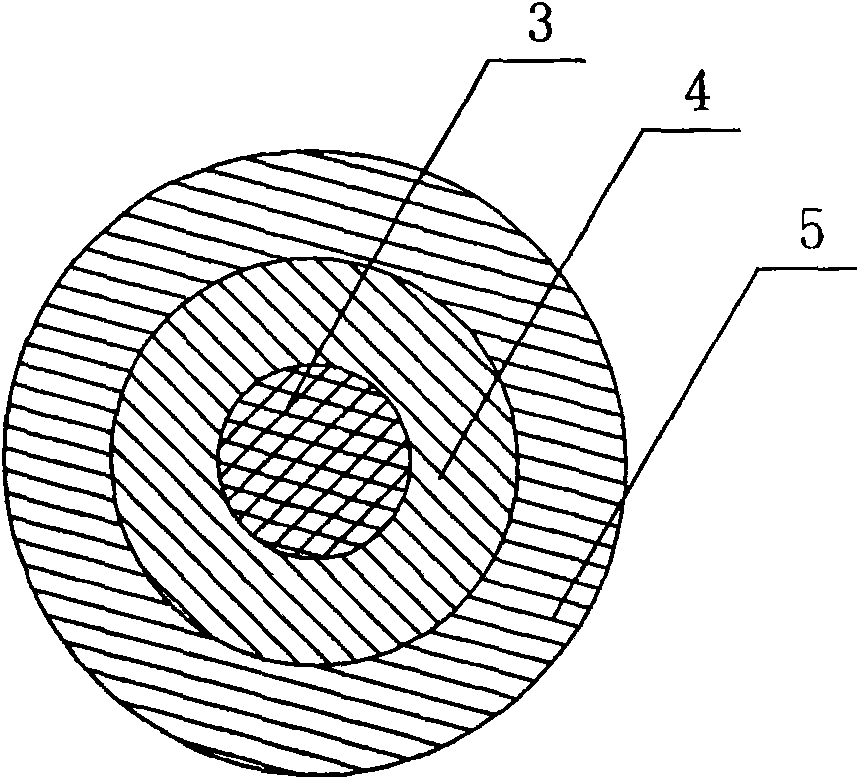Nano capacitor and electronic ballast using same
A capacitor and micro-capacitor technology, applied in capacitors, fixed capacitors, multiple fixed capacitors, etc., can solve the problems of poor working stability and reliability, poor high temperature resistance, and poor temperature resistance, so as to improve working reliability and performance. Stability, lower temperature rise, small size effect
- Summary
- Abstract
- Description
- Claims
- Application Information
AI Technical Summary
Problems solved by technology
Method used
Image
Examples
Embodiment 1
[0027] Embodiment 1: as figure 2 As shown, the inner layer conductor 3 of the microcapacitor 2 of the nanocapacitor in the present embodiment is a multi-walled carbon nanotube with an average diameter of 80 nanometers, and a height of 10 microns. The inner layer conductor 3 is on the base of the metal aluminum electrode grown vertically. Then, the outer surface of the inner layer conductor 3 is coated with a layer of aluminum oxide annular film insulator as the interlayer insulator 4 (medium), and its thickness is 10 microns, and then the outer surface of the interlayer insulator 4 is coated with a layer of insulator. The gap between the insulator and the interlayer insulator 4 is filled with aluminum as the outer layer conductor 5, and its thickness is less than 100 nanometers. Such as figure 1 As shown, the electrode 1 of the nanocapacitor is a flat film electrode, and there are many microcapacitors 2 connected in parallel between the electrodes 1, the number of which is ...
Embodiment 2
[0030] Embodiment 2: as figure 2 As shown, the inner layer conductor 3 of the microcapacitor 2 in the present embodiment is an aluminum wire structure with an average diameter of 90 nanometers and a height of 20 microns, which is called an aluminum nanowire. The inner layer conductor 3 is on the base of the metal aluminum electrode It is grown vertically, and then oxidized a layer of ring-shaped thin-film insulating aluminum oxide on the inner layer conductor 3 as the interlayer insulator 4 (dielectric), with a thickness of 10 microns, and then coating a layer on the interlayer insulator 4 (dielectric). Aluminum with a layer thickness of 10 μm serves as the outer conductor 5 . Such as figure 1 As shown, the electrode 1 of the nanocapacitor is a flat film electrode, and there are many microcapacitors 2 connected in parallel between the electrodes 1, the number of which is determined according to the capacity. The layer conductor 3 is connected to the upper electrode 1 , and ...
Embodiment 3
[0033] Embodiment 3: as figure 2 As shown, the inner layer conductor 3 of the microcapacitor 2 of the nanocapacitor in the present embodiment is a multi-walled carbon nanotube with an average diameter of 80 nanometers, and a height of 10 microns. The inner layer conductor 3 is on the base of the metal aluminum electrode grown vertically. Then, the outer surface of the inner layer conductor 3 is coated with a layer of aluminum oxide annular film insulator as the interlayer insulator 4 (medium), and its thickness is 90 nanometers, and then the outer surface of the interlayer insulator 4 is coated with a layer of insulator. The gap between the insulator and the interlayer insulator 4 is filled with aluminum as the outer layer conductor 5 with a thickness of 10 microns. Such as figure 1 As shown, the electrode 1 of the nanocapacitor is a flat film electrode, and there are many microcapacitors 2 in parallel between the electrodes 1, the number of which is determined according to...
PUM
 Login to View More
Login to View More Abstract
Description
Claims
Application Information
 Login to View More
Login to View More - R&D
- Intellectual Property
- Life Sciences
- Materials
- Tech Scout
- Unparalleled Data Quality
- Higher Quality Content
- 60% Fewer Hallucinations
Browse by: Latest US Patents, China's latest patents, Technical Efficacy Thesaurus, Application Domain, Technology Topic, Popular Technical Reports.
© 2025 PatSnap. All rights reserved.Legal|Privacy policy|Modern Slavery Act Transparency Statement|Sitemap|About US| Contact US: help@patsnap.com


